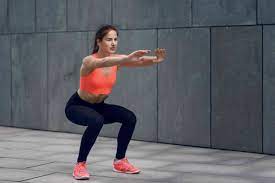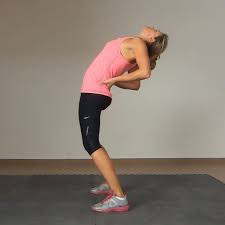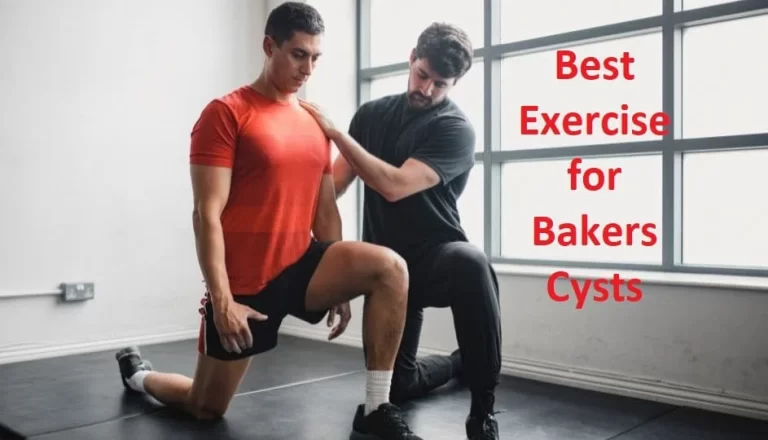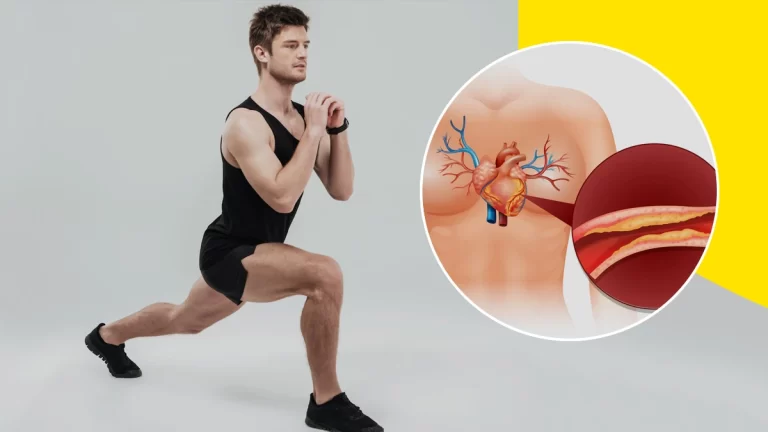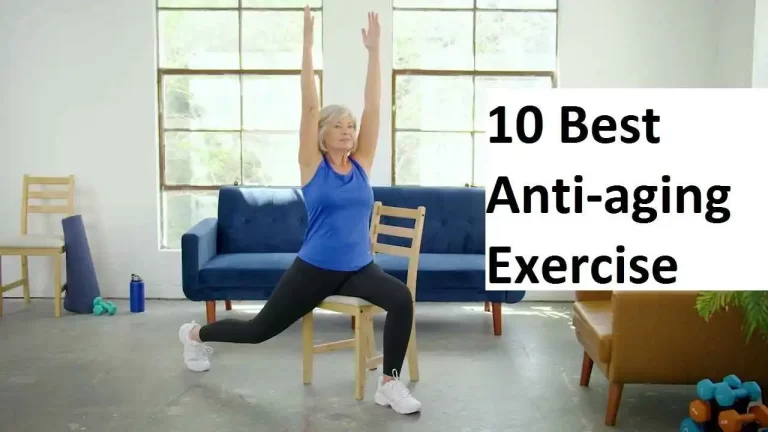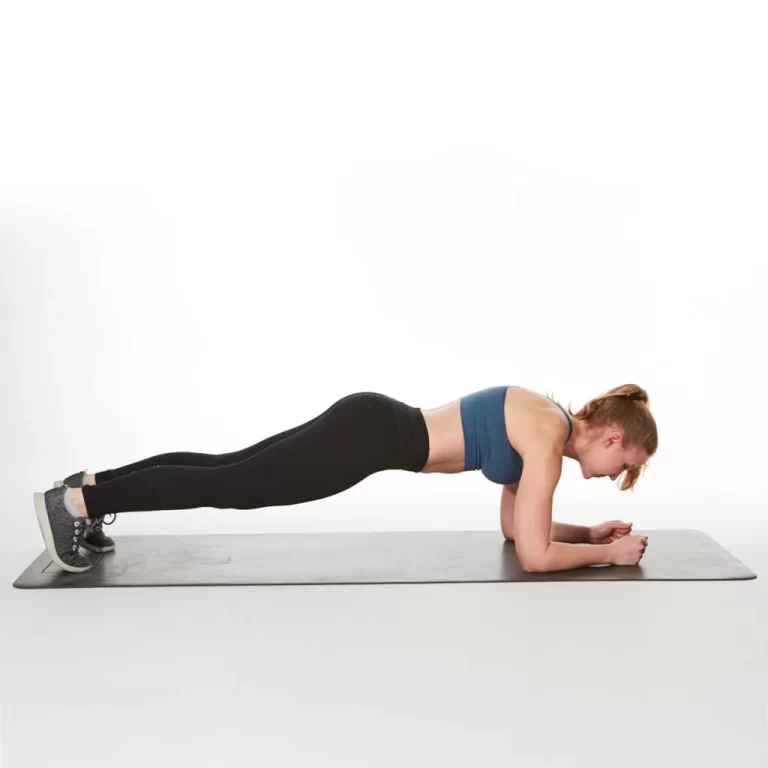Squat
Table of Contents
What is a Squat?
Squats are a dynamic strengthening training exercise, which requires some muscles in the upper and lower body to work together at the same time.
A squat is a strengthening exercise in which the person attempts to lower their hips from a standing posture and then stands back up again. while going through the descent, the hip and knee joints come into flexion while the ankle joint does the dorsiflexion. vice versa the hip and knee joints doing extension and the ankle joint going for plantarflexion during standing up. Squats are also useful for the hip muscles
Types of squat
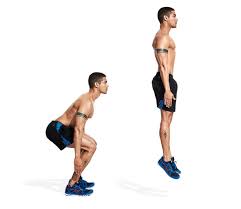
- Bodyweight squats: This is the most basic type of squat and is great for beginners. It involves standing with feet shoulder-width apart, lowering your body by bending your knees and hips, and then standing back up. This exercise targets your gluteal, quadriceps, and hamstrings muscle.
- Barbell squats: This type of squat involves using a barbell across your shoulders or held in front of your body for added resistance. It is a more advanced squat and requires the proper form to avoid injury. Barbell squats target your glutes, quads, hamstrings, and lower back.
- Goblet squats: This type of squat involves holding a weight in front of your chest to add resistance. It is a great alternative to barbell squats and targets your quads, glutes, hamstrings, and core.
- Sumo squats: This type of squat involves a wider stance and turning your toes outwards, targeting the inner thighs more. Sumo squats are great for building strength in your inner thighs, glutes, and quads.
- Bulgarian split squats: This type of squat involves standing with one foot on a bench or elevated surface while the other foot is planted on the ground, adding extra resistance and working each leg individually. Bulgarian split squats target your quads, hamstrings, glutes, and calves.
- Jump squats: This type of squat involves adding a jump at the end of the squat, increasing power and explosiveness. Jump squats are great for building explosive strength in your legs and targeting your glutes, quads, and hamstrings.
Incorporating different types of squats into your workout routine can help you target different muscle groups and prevent boredom. It’s important to use proper form and start with lighter weights or bodyweight before progressing to more advanced variations.
Squat Youtube Video
Muscles performing
Squats primarily target the lower body muscles, including the glutes, quads, hamstrings, and calves. Additionally, squats engage the core muscles for stabilization and balance.
Glutes: The gluteus maximus is the biggest muscle in the body and is liable for performing hip extension. Squats activate the glutes to a significant degree, making it an effective exercise for building a strong and toned butt.
Quads: The quadriceps are located on the front of the thigh and are responsible for knee extension. Squats target the quads to a great extent, especially when performed with a full range of motion (thighs parallel to the ground).
Hamstrings: The hamstrings are located on the back of the thigh and are responsible for hip extension and knee flexion. Squats also engage the hamstrings to a certain degree, particularly when using a wider stance or performing deeper squats.
Calves: The gastrocnemius and soleus muscles of the calf are used for plantar flexion (pointing the toes). Squats engage the calves as stabilizers during the exercise, but they are not the primary muscle group targeted.
Core: The core muscles, including the rectus abdominis, obliques, and erector spinae, are engaged during squats for stabilization and balance. Proper form with a tight core is essential for avoiding injury and maximizing results.
How to perform?
Here is a step-by-step guide on how to perform squats:
- Stand with your feet shoulder-width apart, toes pointing out forward or a little outward side.
- Keep your chest up and shoulders back, engage your core muscles, and maintain a neutral spine.
- move down your body by bending your knees and hips, just like you sitting back into a chair. Keep your weight on your heels and maintain a straight line from your ears to your hips.
- move down yourself until your thighs are parallel to the surface, or as low as you can comfortably go without compromising your form.
- Pause momentarily at the bottom of the squat, then push through your heels and extend your hips and knees to return to the starting position.
- Repeat for as many as you can the number of repetitions.
Tips for proper form:
- maintain your knees in line with your toes during the whole movement.
- Avoid leaning forward or rounding your lower back.
- maintain your weight balanced equally on both feet.
- Breathe in as you lower yourself, and exhale as you push up.
- Start with lighter weights or bodyweight squats to master the form before adding more resistance.
Benefits of squat
Squats are a highly effective exercise that can provide numerous benefits for your body and overall health. Here are some of the main benefits of doing squats:
- Builds strength: Squats are a compound exercise that works for multiple muscle groups at once, including your quadriceps, hamstrings, glutes, and core. By regularly performing squats, you can build strength in these muscles, which can improve your overall athletic performance and help you perform daily activities with greater ease.
- Increases muscle mass: Squats are also an effective way to build muscle mass, especially in your lower body. This can improve your overall body composition, increase your metabolism, and help you burn more calories throughout the day.
- Improves mobility and flexibility: Squats require a wide range of motion in your hips, knees, and ankles, which can help improve your overall mobility and flexibility. This can be especially beneficial for older adults or people with sedentary jobs who may have limited mobility.
- Boosts cardiovascular health: Squats are a high-intensity exercise that can get your heart rate up and provide a cardiovascular workout. This can improve your heart health, increase your endurance, and help you burn more calories.
- Enhances balance and stability: Squats require you to maintain proper form and balance throughout the movement, which can improve your overall balance and stability. This can be especially advantageous for older adults or people with balance issues.
- Reduces the risk of injury: By strengthening your muscles and improving your mobility, squats can also help reduce the risk of injury during other activities or exercises. This is because stronger muscles and better mobility can help you move more efficiently and with greater control.
- can be done anywhere
To perform bodyweight squats, you do not require any equipment. All you need is your body and adequate space to lower your hips into a sitting position. And, if you are running out of time, you can still get the advantage of many muscle groups by doing 50 squats a day: Try doing 25 in the morning and 25 at night. As you get stronger in your muscle, add 25 to the afternoon.
Precautions
While squats are a highly effective exercise, it’s important to take certain precautions to avoid injury. Here are some precautions to keep in mind when doing squats:
- Warm-up: Before doing squats, it’s important to warm up your muscles and joints. This can involve light cardio, dynamic stretching, or mobility exercises.
- Proper form: Proper form is essential when doing squats to avoid injury and get the most benefit from the exercise. Some key form tips include keeping your feet shoulder-width apart, keeping your knees in line with your toes, keeping your chest up and back straight, and lowering down until your thighs are parallel to the ground.
- Start with bodyweight: If you’re new to squats or haven’t done them in a while, it’s best to start with bodyweight squats before adding weight. This can help you perfect your form and avoid injury.
- Increase weight gradually: If you’re using weights for squats, it’s important to increase the weight gradually over time. This can help to reduce the risk of injury and ensure that you’re improving strength safely.
- Avoid overtraining: While squats can provide many benefits, it’s important to avoid overtraining or doing too many squats in one workout. This can result in muscle fatigue or injury.
- Listen to your body: It’s important to listen to your body when doing squats and stop if you experience pain or discomfort. This can help prevent injury and ensure that you’re not pushing yourself too hard.
By following these precautions, you can safely and effectively incorporate squats into your workout routine and enjoy all of the benefits that they have to offer.
Overall, squats are a highly effective exercise that can provide numerous benefits for your body and overall health. By incorporating squats into your regular workout routine, you can build strength, increase muscle mass, improve mobility and flexibility, boost cardiovascular health, enhance balance and stability, and reduce the risk of injury
FAQ
Squats can hurt your knees if they are not performed correctly or if you have pre-existing knee injuries. To prevent knee pain, make sure to maintain proper form and alignment during the exercise, and start with lighter weights or bodyweight squats.
The frequency of squats depends on your fitness goals and training program. Generally, it is recommended to perform squats 2-3 times per week for strength and muscle building.
To improve your squat form, focus on maintaining proper alignment of your feet, knees, hips, and spine. Practice with lighter weights or bodyweight squats before adding resistance. You can also seek guidance from a certified personal trainer or coach.
Do you have any mobility the depth of the squat depends on your mobility and strength. Ideally, you should aim to squat until your thighs are parallel to the ground or lower. However, for issues or injuries, you may need to modify the depth of your squat.

